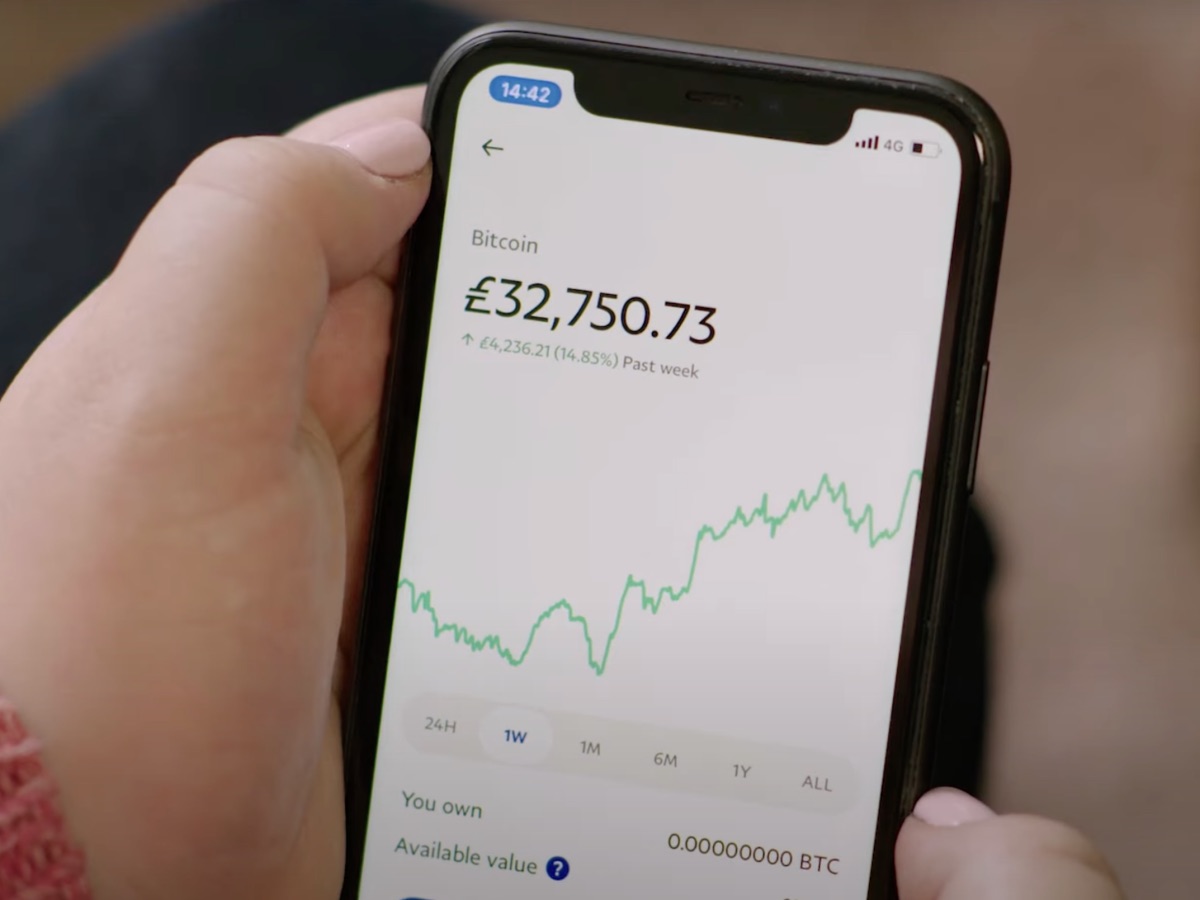Introduction
Welcome to the captivating world of Bitcoin, the revolutionary digital currency that has taken the financial industry by storm. Created in 2009, Bitcoin has grown from a mere concept into a global phenomenon, reshaping the way we think about money and transactions.
With its decentralized nature and robust encryption, Bitcoin offers a secure and efficient means of conducting online transactions without the need for intermediaries such as banks or governments. It has gained widespread popularity due to its potential for anonymity, low transaction fees, and borderless nature.
In this article, we will delve into the origins of Bitcoin, explore its mysterious creator, Satoshi Nakamoto, and trace the key milestones in its journey to becoming a disruptive force in the financial world. We will also examine how Bitcoin’s decentralized nature has paved the way for its adoption and growth, marking a significant shift in the way we perceive and interact with money.
So, fasten your seatbelts and prepare to embark on a fascinating journey into the world of Bitcoin, where innovation, decentralization, and financial independence collide.
The Origins of Bitcoin
The story of Bitcoin can be traced back to a pivotal moment in 2008, when an individual or group operating under the pseudonym Satoshi Nakamoto introduced the concept of a decentralized digital currency. Up until that point, digital transactions relied heavily on centralized systems, such as banks and payment processors, which acted as intermediaries for financial transactions.
Nakamoto’s aim was to create a digital currency that would operate independently of any central authority, allowing individuals to conduct transactions directly with one another over the internet. This vision laid the foundation for what would later become Bitcoin.
In October 2008, Nakamoto published a whitepaper titled “Bitcoin: A Peer-to-Peer Electronic Cash System,” which outlined the fundamental principles and underlying technology behind Bitcoin. The whitepaper described a system where transactions would be verified by network participants, called miners, through a process known as mining. This collective verification mechanism eliminated the need for a centralized authority and ensured the security and integrity of the system.
But it wasn’t until January 3, 2009, that the world witnessed the birth of the first block of the Bitcoin blockchain, known as the Genesis Block. This significant event marked the official launch of the Bitcoin network and the beginning of a new era in digital currency.
At its inception, Bitcoin was met with skepticism and uncertainty. Many questioned its viability and potential impact on the traditional financial system. However, a small community of tech enthusiasts and early adopters recognized the immense potential of this innovative technology and started mining and transacting with Bitcoin.
In the early days, Bitcoin had no intrinsic value and was primarily used for experimental purposes and as a means of exchange between early adopters. However, as more people became aware of its potential, the demand for Bitcoin started to grow, leading to its gradual evolution from an experimental project to a valuable digital asset.
The Origins of Bitcoin set the stage for a transformative journey that would see it becoming one of the most influential inventions of the 21st century. In the following sections, we will explore the early days of Bitcoin mining, its first transactions, and its eventual path to mainstream recognition.
The Mysterious Creator: Satoshi Nakamoto
One of the most intriguing aspects of Bitcoin is the enigmatic figure behind its creation: Satoshi Nakamoto. Despite the widespread interest in Bitcoin and its impact on the financial world, Nakamoto’s true identity remains shrouded in mystery.
In the Bitcoin whitepaper published in 2008, Nakamoto introduced himself as a Japanese male in his late 30s. However, as time went on, some began to question the authenticity of this claim, leading to various theories and speculations about Nakamoto’s true identity.
While Nakamoto’s identity remains unknown, what we do know is that the person or group behind the pseudonym was a brilliant mind with a deep understanding of cryptography, computer science, and economics. The level of technical expertise demonstrated in the Bitcoin whitepaper and the subsequent development of the cryptocurrency has led many to believe that Nakamoto may have had professional experience in these fields.
Nakamoto’s involvement in the early days of Bitcoin was instrumental in laying the groundwork for the cryptocurrency. He actively participated in online forums and mailing lists, engaging in discussions with other developers and enthusiasts. However, in December 2010, Nakamoto suddenly vanished from the Bitcoin scene, leaving many to wonder about his motivations and reasons for stepping away.
Since his disappearance, numerous individuals have come forward claiming to be Nakamoto or have intimate knowledge of his true identity. However, none of these claims have been substantiated, and the true identity of Nakamoto remains an unsolved puzzle.
Despite Nakamoto’s anonymity, his contributions to the world of cryptocurrencies and blockchain technology cannot be understated. The concepts laid out in the Bitcoin whitepaper revolutionized the way we think about finance and digital transactions. Nakamoto’s creation has had a profound impact not only on the world of finance but also on cybersecurity, privacy, and decentralization.
The mystery surrounding Nakamoto’s identity adds an element of intrigue and fascination to the story of Bitcoin. As the cryptocurrency continues to gain popularity and disrupt traditional financial systems, the enigma of Satoshi Nakamoto’s identity remains one of the greatest mysteries of the digital age.
Bitcoin’s Whitepaper: A Peer-to-Peer Electronic Cash System
The publication of the Bitcoin whitepaper by Satoshi Nakamoto in October 2008 laid the foundation for a groundbreaking innovation in the world of finance. Titled “Bitcoin: A Peer-to-Peer Electronic Cash System,” the whitepaper outlined the core principles and technical details of the cryptocurrency that would soon revolutionize the way we perceive and use money.
In the whitepaper, Nakamoto addressed the fundamental problem with traditional financial systems: the reliance on trusted third parties for conducting transactions. He proposed a decentralized system that would enable individuals to exchange value directly, without the need for intermediaries such as banks or payment processors.
One of the key concepts introduced in the whitepaper was the use of blockchain technology. The blockchain serves as a public ledger that records all Bitcoin transactions, ensuring transparency and immutability. It eliminates the need for a central authority to verify and validate transactions, as the network of participants collectively maintains the integrity of the blockchain.
Nakamoto also introduced the concept of mining, a process through which participants known as miners solve complex mathematical puzzles to validate transactions and add them to the blockchain. This consensus mechanism not only ensures the security and decentralization of the network but also incentivizes participants with newly minted Bitcoins.
Furthermore, the whitepaper highlighted the importance of cryptographic techniques in securing transactions and preserving privacy. Transactions in the Bitcoin network are secured using public-key cryptography, ensuring that only the intended recipient can access the funds.
Bitcoin’s whitepaper received significant attention from the cryptographic and tech communities, sparking a wave of enthusiasm and interest in the potential of this innovative digital currency. It laid the groundwork for the development and implementation of the Bitcoin protocol, which has since become the foundation for numerous other cryptocurrencies and blockchain projects.
While the whitepaper served as a roadmap for the development of Bitcoin, it was only the beginning of a long and transformative journey. The principles and concepts laid out in the whitepaper would be refined and implemented in the subsequent years, leading to the evolution of the Bitcoin network and its growing adoption worldwide.
The publication of the Bitcoin whitepaper marked a pivotal moment in the history of digital currencies. It introduced a new paradigm for finance, one that is decentralized, transparent, and accessible to all. The impact of Nakamoto’s vision and the principles outlined in the whitepaper cannot be overstated, as they continue to shape the future of money and revolutionize traditional financial systems.
Bitcoin’s Genesis Block: The Beginning of a New Era
On January 3, 2009, the world witnessed the creation of the first block on the Bitcoin blockchain, known as the Genesis Block. This marked the official launch of the Bitcoin network and the beginning of a new era in the history of digital currencies.
The Genesis Block, also referred to as Block 0, was mined by the mysterious creator of Bitcoin, Satoshi Nakamoto. This inaugural block holds a special significance as it serves as the foundation for all subsequent blocks in the blockchain. It represents the birth of Bitcoin and the establishment of a peer-to-peer electronic cash system.
Embedded within the Genesis Block is a message left by Nakamoto, which reads, “The Times 03/Jan/2009 Chancellor on brink of second bailout for banks.” This message is believed to be a symbolic statement highlighting the flaws and risks associated with the traditional financial system and emphasizing the need for a decentralized alternative.
The Genesis Block was not like any other block in the blockchain. Its creation did not involve the validation of any previous transactions, as there were none. Instead, the block contained the initial 50 Bitcoins created by Nakamoto, which serve as the genesis of the cryptocurrency.
With the creation of the Genesis Block, Nakamoto demonstrated the technical feasibility of a decentralized digital currency and set in motion a global movement towards financial independence. The Genesis Block laid the groundwork for the validation and recording of subsequent transactions on the Bitcoin network, forming the basis for the secure and transparent nature of the blockchain.
While the Genesis Block may seem insignificant in size compared to the millions of blocks that follow it, its creation represented a significant leap forward in the development and adoption of Bitcoin. It marked the beginning of a decentralized financial system that has the potential to reshape the way we think about money and empower individuals across the globe.
The symbolic message embedded within the Genesis Block speaks volumes about the motivation and purpose behind Bitcoin’s creation. Nakamoto’s message reflects a critical view of the traditional banking system and underscores the importance of financial freedom and empowerment.
The Genesis Block serves as a reminder of the revolutionary nature of Bitcoin and the transformative power it holds. It is a testament to the vision and innovation of Satoshi Nakamoto and the potential for cryptocurrencies to disrupt traditional financial systems and usher in a new era of financial sovereignty.
The Early Days of Bitcoin Mining
In the early days of Bitcoin, mining played a crucial role in the network’s operation and growth. Mining is the process of validating transactions and adding them to the blockchain, ensuring the security and integrity of the cryptocurrency.
During the early days, Bitcoin mining was relatively simple, and anyone with a computer and an internet connection could participate. The mining process involved solving complex mathematical puzzles using computational power, with successful miners being rewarded with newly minted Bitcoins.
In the beginning, mining could be performed on regular CPUs (central processing units). However, as interest in Bitcoin grew, so did the competition. Miners soon discovered that GPUs (graphics processing units) were more effective in solving the computational puzzles required for mining. This led to a surge in demand for GPUs and a shift towards more powerful mining rigs.
As the network continued to grow, the difficulty of the mining puzzles increased, making it increasingly challenging for individual miners to compete. This led to the rise of mining pools, where multiple miners pooled their resources to increase their chances of successfully mining blocks and earning rewards. Mining pools allowed participants to combine their computational power, increasing their collective mining efficiency and the chances of receiving Bitcoin rewards.
The early miners played a vital role in securing the Bitcoin network and establishing its credibility. Their computational power contributed to the validation and recording of transactions, ensuring the integrity of the blockchain.
At the time, the value of Bitcoin was still relatively low, and mining was considered a hobby for many enthusiasts. Some early adopters accumulated substantial amounts of Bitcoin through mining, which later appreciated significantly in value.
However, mining during the early days was not without its challenges. Power consumption and hardware costs were concerns for miners, and many faced difficulties with heat management and equipment maintenance. Despite these challenges, early miners persevered, driven by their belief in the potential of Bitcoin and the decentralized future it promised.
The early days of Bitcoin mining marked a period of experimentation and discovery. It laid the foundation for the mining industry’s evolution and the development of more efficient hardware, such as ASIC (Application-Specific Integrated Circuit) miners, designed specifically for Bitcoin mining.
As Bitcoin gained mainstream recognition and its value increased significantly, mining became a more specialized and competitive industry. Today, mining Bitcoin requires specialized equipment and substantial computational power. Large-scale mining operations have emerged, often located in regions with low electricity costs, to maximize profitability.
The early days of Bitcoin mining paved the way for the network’s growth and established the mining industry as an integral part of the cryptocurrency ecosystem. It showcased the dedication and ingenuity of early miners and highlighted the transformative potential of digital currencies and decentralized systems.
Bitcoin’s First Transactions
After the creation of the Genesis Block, Bitcoin began its journey towards becoming a functional digital currency. The early days of Bitcoin were marked by a series of transactions that showcased the potential of this revolutionary payment system.
On January 12, 2009, the first-ever Bitcoin transaction took place between Satoshi Nakamoto and computer scientist Hal Finney. Nakamoto sent 10 Bitcoins to Finney as a test to ensure that the system was functioning as intended. This historic transaction demonstrated the viability of Bitcoin as a medium of exchange and paved the way for future transactions.
In the following months, more transactions began to occur as awareness and interest in Bitcoin continued to grow. The early adopters of Bitcoin recognized its potential and started engaging in transactions to buy and sell goods and services.
On May 22, 2010, one of the most famous Bitcoin transactions took place. Laszlo Hanyecz, a programmer, made history by purchasing two pizzas for 10,000 Bitcoins. This transaction, which would later be known as “Bitcoin Pizza Day,” marked the first real-world transaction where Bitcoin was used as a currency to purchase goods.
As time went on, Bitcoin transactions became more common, and their use cases expanded. Online marketplaces started accepting Bitcoin as a payment method, allowing users to purchase a wide range of products and services using the cryptocurrency.
Bitcoin’s borderless nature and low transaction fees made it an attractive option for international transactions. Individuals and businesses began using Bitcoin to send and receive funds across different countries without the need for traditional banking systems and their associated fees and delays.
One notable transaction that gained international attention was the purchase of a Lamborghini using Bitcoin. In 2013, a car dealership in California sold a Tesla Model S to a customer who paid for it entirely in Bitcoin. This transaction showcased the growing acceptance of Bitcoin as a means of high-value transactions.
Bitcoin was also embraced by charitable organizations, as it provided a transparent and efficient way to donate funds globally. Non-profit organizations began accepting Bitcoin donations, enabling donors to contribute to causes without geographical restrictions or third-party intermediaries.
Over the years, Bitcoin transactions have continued to grow in volume and diversity. From everyday purchases to large-scale investments and international remittances, Bitcoin has proven its potential as a reliable and efficient form of digital currency.
The early transactions in Bitcoin’s history played a significant role in establishing its credibility and functionality as a digital currency. They demonstrated that Bitcoin could be used for real-world transactions, opening up endless possibilities for the future.
As Bitcoin continues to evolve and gain acceptance, its transaction volume and use cases are expected to expand, further cementing its position as a transformative force in the world of finance.
Bitcoin’s Adoption and Growth
Since its inception, Bitcoin has experienced remarkable growth and adoption, steadily gaining recognition as a legitimate form of currency and investment. The journey from a niche digital currency to a global phenomenon has seen Bitcoin overcome numerous challenges and capture the imagination of individuals and institutions worldwide.
In the early days, Bitcoin adoption was primarily driven by tech enthusiasts and libertarian-minded individuals who were drawn to its decentralized nature and the potential for financial freedom it offered. These early adopters paved the way for broader acceptance by establishing a network of merchants and businesses willing to accept Bitcoin as a form of payment.
As Bitcoin’s popularity grew, larger companies began to realize its potential and started accepting it as a payment method. Companies such as Microsoft, Overstock, and PayPal have embraced Bitcoin, allowing customers to make purchases using the digital currency.
Another significant development in Bitcoin’s adoption was the establishment of cryptocurrency exchanges. These platforms facilitated the buying and selling of Bitcoin, making it more accessible to the general public. The creation of exchanges provided an avenue for individuals to convert traditional currencies into Bitcoin and vice versa, fueling the growth of the cryptocurrency ecosystem.
Bitcoin’s adoption also saw increased recognition and acceptance on a global scale. Governments and regulatory bodies started addressing the emergence of Bitcoin and developing frameworks to govern its use. Some countries, like El Salvador, have even adopted Bitcoin as legal tender, further cementing its status as a legitimate form of currency.
The growth of Bitcoin has also been fueled by its potential as an investment. Individuals and institutional investors turned their attention to Bitcoin as a store of value and a hedge against traditional financial systems. The limited supply of Bitcoin (capped at 21 million coins) and its decentralized nature made it an attractive option for those seeking an alternative to fiat currencies.
Bitcoin’s value has witnessed significant fluctuations over the years, with periods of rapid growth and market volatility. However, the overall trend has been upward, and Bitcoin has garnered a reputation as a lucrative investment opportunity. This attracted institutional investors, such as hedge funds and asset management firms, to explore and allocate capital to Bitcoin.
Furthermore, the integration of traditional financial infrastructure with Bitcoin has contributed to its adoption. Financial institutions have begun offering Bitcoin-related products, including futures contracts and exchange-traded funds (ETFs), providing investors with more avenues to participate in the cryptocurrency market.
Bitcoin’s use cases have expanded beyond individual transactions and investments. It has become a popular tool for remittances, with individuals using the digital currency to send money across borders without the need for traditional banking systems. Additionally, Bitcoin has provided a means for individuals in underbanked regions to access financial services and participate in the global economy.
Bitcoin’s adoption and growth have defied initial skepticism, proving its resilience and potential to revolutionize the financial landscape. As more individuals, institutions, and governments recognize its value and potential, Bitcoin’s impact on the global economy is set to continue expanding.
The Road to Mainstream Recognition
Bitcoin’s journey from an obscure digital currency to mainstream recognition has been a gradual process, marked by milestones and challenges along the way. The road to mainstream recognition has required overcoming skepticism, building trust, and educating the public about the potential of this revolutionary technology.
In the early years, Bitcoin faced criticisms and doubts from traditional financial institutions, governments, and regulatory bodies. Skeptics raised concerns about its volatility, potential for illicit activities, and lack of central authority. However, as more individuals and organizations began to engage with Bitcoin, these concerns started to be addressed through improved security measures, increased transparency, and regulatory frameworks.
One of the key drivers of Bitcoin’s journey to mainstream recognition was increased media coverage and public awareness. As news outlets started reporting on Bitcoin and its potential, it captured the attention of a broader audience. Media coverage highlighted the use cases of Bitcoin, profiling early adopters, and showcasing its potential to disrupt traditional financial systems.
Bitcoin’s growing acceptance by merchants also played a significant role in its path to mainstream recognition. As more businesses started accepting Bitcoin as a form of payment, it demonstrated the practicality and usability of the digital currency. This acceptance helped establish a network effect, where the more merchants accepted Bitcoin, the more individuals were incentivized to acquire and use it.
Additionally, the development of user-friendly wallets and payment platforms improved the accessibility and ease of use of Bitcoin for the average person. With the advent of mobile wallets and simplified payment processes, individuals could transact with Bitcoin seamlessly, further driving mainstream adoption.
The integration of Bitcoin into traditional financial infrastructure also contributed to its recognition and acceptance. The involvement of established financial institutions, such as banks and payment processors, in facilitating Bitcoin transactions and offering related products and services, lent credibility to the digital currency. This collaboration bridged the gap between the world of cryptocurrencies and traditional finance, making Bitcoin more familiar and appealing to a wider audience.
Regulatory developments and advancements in consumer protection also played a crucial role in Bitcoin’s path to mainstream recognition. Governments and regulatory bodies started acknowledging the importance of cryptocurrencies and developing frameworks to govern their use. These regulations aimed to protect consumers, mitigate risks, and prevent illicit activities, providing a level of confidence for individuals and institutions to engage with Bitcoin.
The endorsement of notable individuals and institutions further propelled Bitcoin towards mainstream recognition. Public figures, entrepreneurs, and influential companies voicing their support for Bitcoin brought additional credibility and visibility to the digital currency. This included endorsements from high-profile individuals such as Elon Musk and institutional investors like MicroStrategy, who publicly announced significant investments in Bitcoin.
Overall, Bitcoin’s road to mainstream recognition has been a continuous process of building trust, fostering adoption, and addressing challenges. As the public perception of cryptocurrencies evolves and the benefits they offer become more evident, the path towards widespread acceptance continues.
Bitcoin’s Impact on the Financial World
Bitcoin has had a profound impact on the financial world, disrupting traditional systems and reshaping the way we think about money and transactions. From its inception, Bitcoin has brought forth several transformative changes and opened up new possibilities for individuals and institutions alike.
Decentralization is one of the key features that sets Bitcoin apart from traditional financial systems. By operating on a decentralized network, Bitcoin eliminates the need for intermediaries, such as banks or payment processors, for conducting transactions. This peer-to-peer model allows for more direct and efficient transactions, reducing costs and increasing accessibility.
Bitcoin has also introduced a new level of transparency to financial transactions through the use of blockchain technology. The blockchain serves as a public ledger, allowing anyone to view and verify transactions. This transparency fosters trust and reduces the potential for fraud and manipulation, thereby increasing confidence in the financial system.
Furthermore, Bitcoin has the potential to provide financial inclusion to the unbanked population around the world. Traditional banking systems can be inaccessible or costly for those in remote or underserved regions. Bitcoin’s borderless nature enables individuals to participate in the global economy and access financial services without the need for a traditional bank account.
Bitcoin’s impact on remittances is significant. International money transfers can be costly and time-consuming, especially for individuals sending money to their home countries. Bitcoin allows for near-instant and low-cost transactions across borders, providing an alternative to traditional remittance methods and potentially saving money for those who depend on these transfers.
Bitcoin also challenges the traditional notion of store of value and wealth preservation. As a finite asset with a capped supply, Bitcoin has properties similar to gold. It can act as a hedge against inflation and diversify investment portfolios. This has attracted the attention of institutional investors who see Bitcoin as a viable asset class that can provide long-term value.
Moreover, Bitcoin has ignited innovation in the financial industry. The underlying technology of Bitcoin, blockchain, has inspired countless applications and use cases beyond cryptocurrencies. The decentralized and immutable nature of blockchain has the potential to revolutionize various sectors, including supply chain management, voting systems, and even identity verification.
Bitcoin’s impact, however, is not without its challenges. Regulatory concerns, market volatility, and scalability are among the many issues that the cryptocurrency ecosystem faces. Addressing these challenges will be crucial for Bitcoin’s continued growth and wider acceptance.
Overall, Bitcoin’s impact on the financial world cannot be understated. It has challenged traditional systems, empowered individuals, and opened up new avenues for innovation. As Bitcoin and cryptocurrencies continue to evolve, their impact will shape the future of finance, offering a decentralized, transparent, and inclusive alternative to the traditional financial system.
Conclusion
Bitcoin has come a long way since its inception in 2009. From its origins as a peer-to-peer electronic cash system outlined in the whitepaper by Satoshi Nakamoto, Bitcoin has grown into a global phenomenon, disrupting the financial world and reshaping our understanding of money.
The road to mainstream recognition has seen Bitcoin overcome skepticism and challenges, gradually gaining acceptance and adoption. Bitcoin’s impact on the financial world has been profound, bringing decentralization, transparency, and financial inclusion to the forefront.
The early days of Bitcoin mining and its first transactions laid the foundation for its adoption and growth. As Bitcoin found its footing, it began to garner recognition from merchants and established financial institutions. Bitcoin’s borderless nature, low transaction fees, and potential for investment attracted individuals and institutional investors alike.
Bitcoin’s journey towards mainstream recognition has been marked by media coverage, regulatory developments, and the endorsement of influential individuals and institutions. Businesses now accept Bitcoin as a legitimate payment method, and governments have started to develop frameworks to govern its use.
Bitcoin’s impact on the financial world extends beyond transactions and investments. It has revolutionized the way we think about money and transactions, while also fueling innovation in the broader blockchain technology space.
While challenges and concerns remain, as with any developing technology, the potential of Bitcoin and its underlying blockchain technology is undeniable. Bitcoin continues to pave the way for a decentralized future, offering financial autonomy and inclusion to individuals across the globe.
As Bitcoin’s journey continues, its impact on the financial world is set to grow. Bitcoin has demonstrated that alternative systems of finance are not only possible but can also provide a more transparent and inclusive framework.
As more individuals, institutions, and governments recognize its potential, Bitcoin’s influence will continue to expand, transforming traditional financial systems and redefining the way we interact with money. The future of Bitcoin is filled with possibilities, and its impact on the financial world will shape the path towards a more decentralized and inclusive global economy.

























